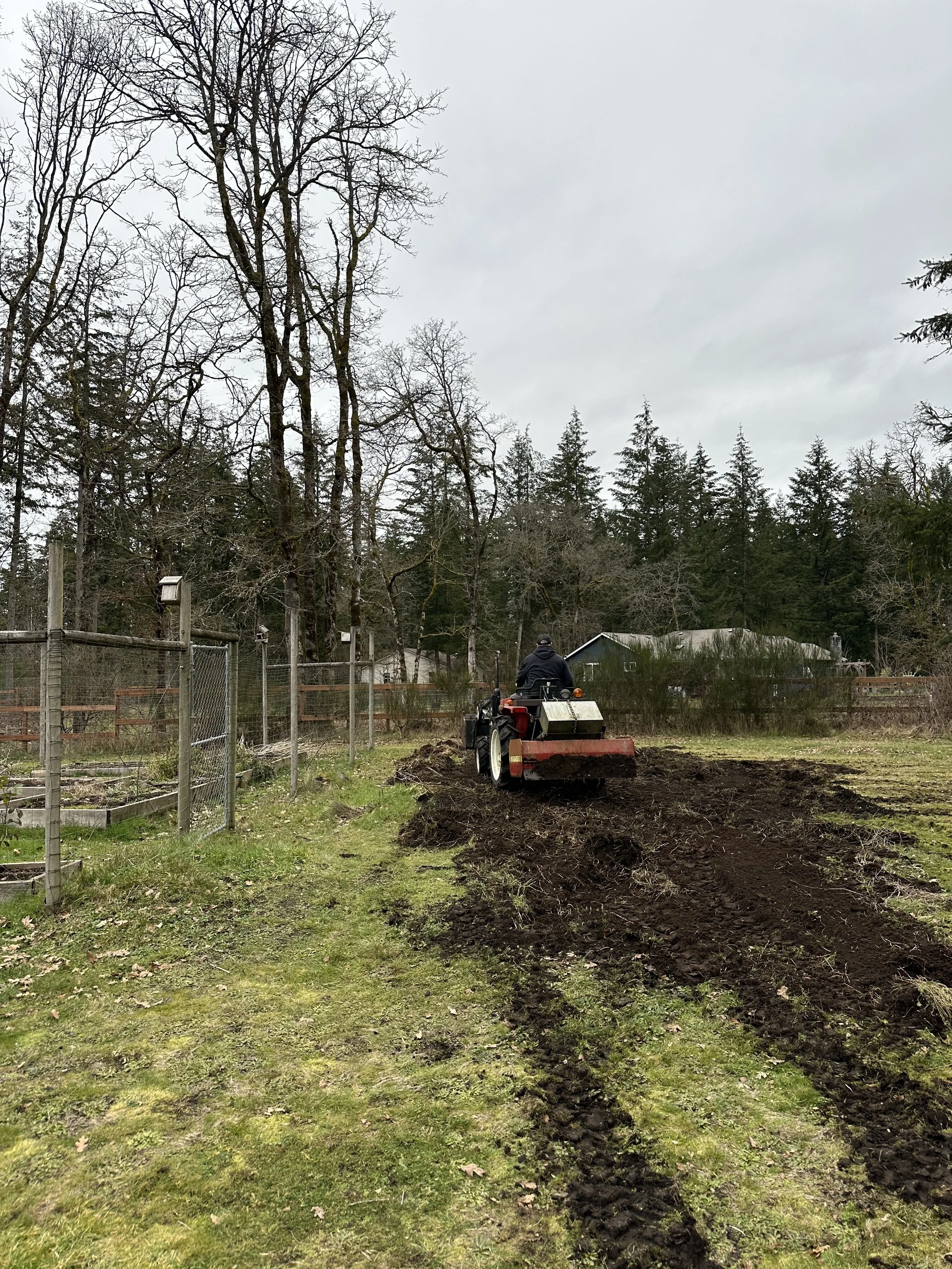The Never-Ending Learning Curve
The funny thing about farming is just when you think you have it all figured out, something comes along to remind you how much there still is to learn. No matter how much experience you gain, there’s always a new curveball waiting. This past week, we ran headfirst into one of those humbling moments when expanding our garden.
What We’ve Been Up To
Last month, my uncle came out with his tractor and helped us knock down our old compost pile. It had essentially turned into an overgrown mound of soil, built up over years as we tossed all our dead plants onto it at the end of each season. With his help, we were able to spread it out over our new garden extension area, making great use of what had once been a neglected heap.
Then, my cousin came out to help my husband and me stake out our new deer fence to connect with our existing fenced growing space. This past week, we got all the fence posts in, and this week we’ll be adding the metal deer fencing to complete the enclosure.
While we were working on this, our compost and mulch deliveries arrived—which led us straight into our unexpected soil dilemma.
The Costly Soil Mistake
We recently brought in 12 yards of compost for our new raised beds in the garden extension area. Every year, we order compost to top-dress our existing raised beds, so this felt like a routine task. It never even crossed my mind while placing the order that we would also need topsoil to create a complete, balanced growing medium.
Once our compost was delivered, my husband and I got to work constructing new raised rock beds, taking full advantage of the endless supply of rocks on our property. We built two beds, each 30 inches wide and 15 feet long, with 18-inch bark walkways in between. It wasn’t until after we had these beautiful beds set up that the realization hit me—we needed topsoil too!
Healthy soil is generally made up of a mix of topsoil and compost. Without topsoil, our plants would struggle to get the nutrients and structure they need to thrive. The kicker? We had already spent over $400 on compost and another $300 on mulch. Then, I learned the most frustrating part—our supplier offers a pre-mixed soil that would have saved us time, money, and effort.
Determined to fix the situation, I called to order topsoil, only to be met with yet another challenge. Apparently, in the wet season, topsoil is nothing more than mud, making it impossible for suppliers to deliver until April. A few more calls to different suppliers confirmed the same thing.
So, what do we do now? Rather than letting this delay our progress, we’ve decided to get creative. We’ll be bringing in bagged topsoil and repurposing the soil from some of our older, non-functional cedar raised beds. By breaking those down and mixing their soil with our compost, we can create the balanced growing medium we need.
This was a very expensive mistake, especially in our first official season of flower farming. Every dollar counts as we work to establish our farm and build a solid foundation for success. While it's frustrating to make such an oversight, it's also a valuable learning experience that will help us make better decisions in the future.
Farming is full of these unexpected lessons. No matter how much we prepare, there’s always something new to navigate. The key is to stay adaptable and find solutions, even when things don’t go as planned. And hey, if nothing else, we now have a great story (and a hard-earned lesson) to add to our farming journey!





